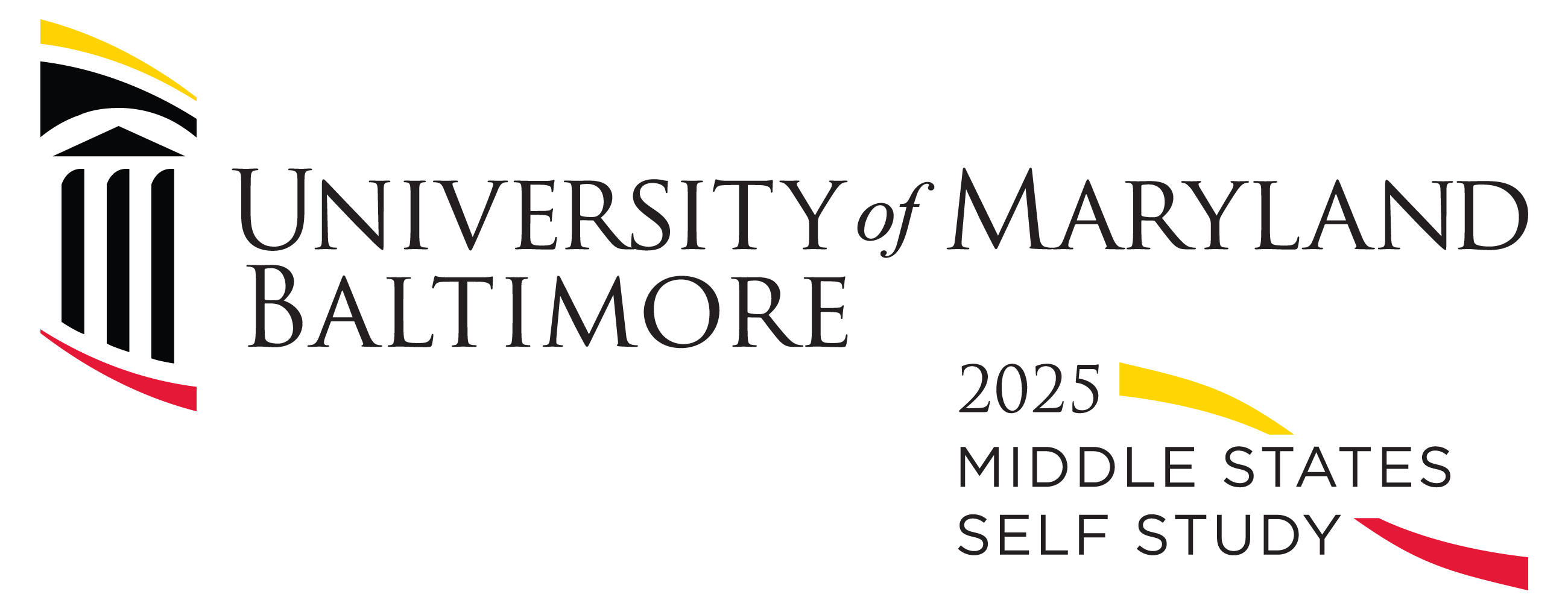Guidelines for Reports
The Steering Committee is responsible for the Self-Study report, and each Working Group is responsible for a portion of the Self-Study document. The product of each Working Group’s efforts will be summarized in the final report to the Middle States Commission on Higher Education. In fact, the majority of the final Self-Study report will be composed of Working Group reports. In addition to editorial standards, Working Groups have been directed to conform to formatting standards to provide consistency in the structure of each chapter. The goal for each Working Group is a concise, content-rich report that is no more than 25 single-spaced pages in length. Each Working Group has been asked to assign one person as the primary writer of the draft chapter.
Organization of the Final Self-Study Report
The work of each of the seven Working Groups will be merged into UMB’s Self-Study Report. The final report will integrate the questions, methodologies, data reviewed, findings, and recommendations of each Working Group. Additional sections of the report will provide an executive summary, an overview of the Self-Study process, and the conclusions/summary of all recommendations of the Self-Study.
Directives for report development are minimal so that all Working Groups can use their autonomous judgment in the development of their Self-Study activities. Simultaneously, the final report needs to be a concise, understandable document for a variety of audiences, including internal and external constituencies.
In addition to gathering and analyzing evidence, each Working Group will produce progress reports, preliminary drafts of the group’s report, and a final draft. To assure a level of consistency in the reports from the working groups, each Working Group report must adhere to the following minimum standards for the preparation of reports: concise writing style, emphasis on analysis, conclusions and recommendations based on evidence, and minimal repetition. Working groups are required to use the UMB print style guide, found at www.umaryland.edu/cpa/toolbox/print-style-guide.
Each report is to be a cohesive, integrated response to not only the specific standard and criteria, but also to institutional efforts to accomplish the mission and strategic goals. The report should discuss connections between the group’s standard and other standard(s) and collaborations that occurred between or among Working Groups. While reports will evaluate institutional strengths, challenges, and opportunities with respect to the group’s standard and criteria, institutional mission, and strategic goals, the tone should be constructive. The Steering Committee co-chairs will edit the Self-Study document before forwarding it to the president and executive leadership and then to the campus for review and feedback. All significant changes to the document will be discussed with members of the Self-Study Steering Committee.
An editing team will receive the reports from the Working Groups and develop a draft Self-Study report that meets the Middle States Commission on Higher Education guidelines, speaks with a consistent voice, and accurately reflects the product of the Working Groups. The final Self-Study Report will conform to the following outline:
- Executive Summary
- Overview of UMB’s Self-Study Process
- Institutional Profile
- Chapters for Each of the Seven Standards (including appropriate requirements of affiliation)
- Conclusion



